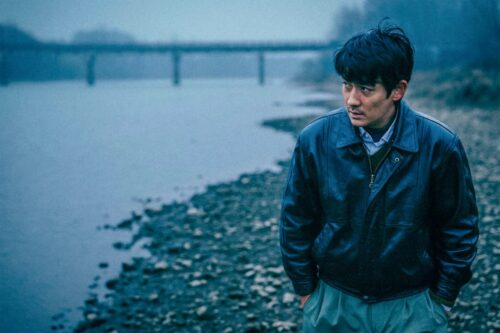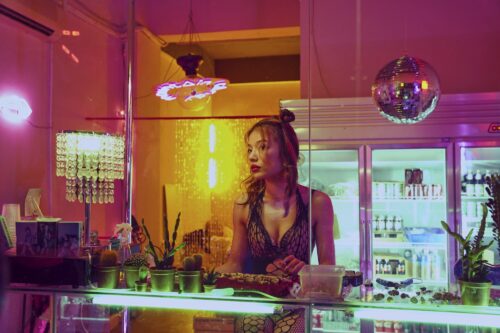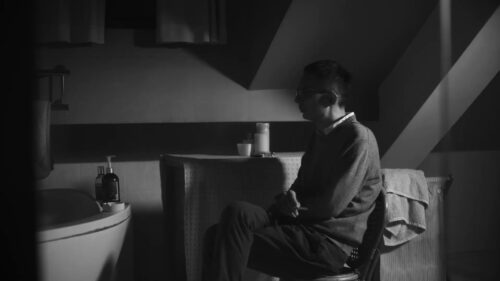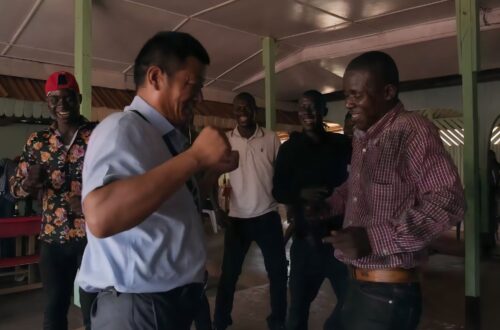‘The Enchanting Shadow’: A classic ghostly romance
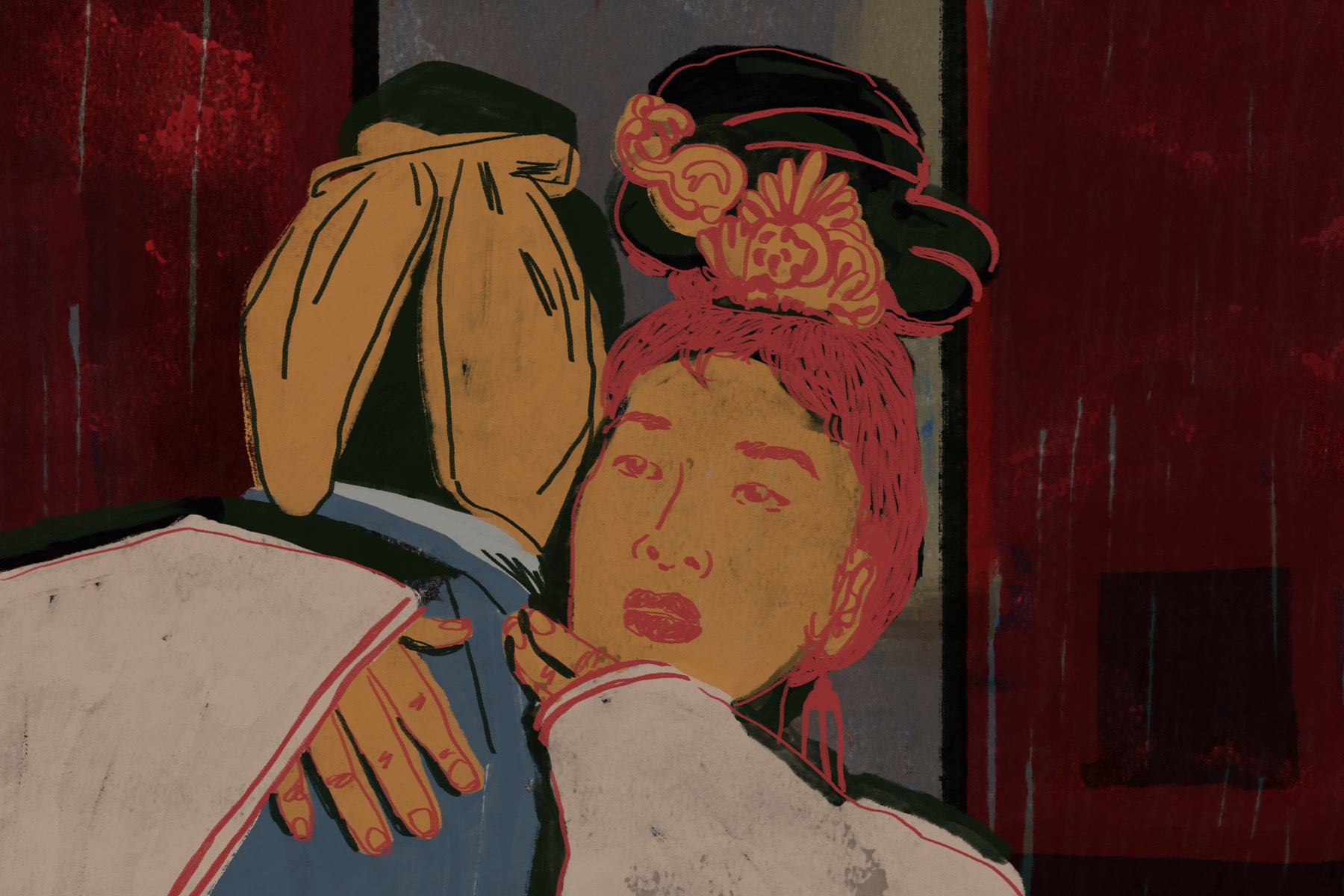
We continue the countdown to Halloween with our series on Chinese horror. This week: The Enchanting Shadow, the first Hong Kong movie to show at Cannes, adapted from a short story by the godfather of Chinese literary bizarrerie.
Illustration by Anna Vignet

If Song at Midnight 夜半歌声 director Ma-Xu Weibang 马徐维邦 is the father of Chinese horror cinema, then the Qing Dynasty writer Pu Songling is its grandfather. Pu’s posthumous Strange Stories from a Chinese Studio 聊斋志异 contains hundreds of supernatural tales, featuring bloodthirsty monsters, tempting fox-spirits, and a variety of ghosts, magicians, and ordinary people. Thanks to Pu’s vivid and bizarre imagination, Chinese filmmakers have been exploring his work since the silent era. The ghostly romance of Nie Xiaoqian 聂小倩 has especially caught their eyes, inspiring over nine film adaptations over the years, as well as countless TV episodes in China, Hong Kong, and Taiwan.
In Pu’s original story, the traveling scholar Ning Caichen stops at a lonely, crumbling temple in the city of Jinhua. While spending the night in the monastery, Ning meets the beautiful spirit of the story’s title, Nie Xiaoqian. The ghost of a young woman, Nie’s been forced by a demon to haunt the building’s grounds, helping the bloodsucking monster kill unsuspecting passersby. By digging up and reburying her bones, Ning saves Nie and introduces her to his home. The scholar’s family is naturally puzzled, but they grow to like and respect the ghost when they see how handy she is around the house. In a weird ending that’s meant to be a happy one, Ning’s own wife dies and gets replaced by Nie, who becomes human and gives birth to two sons.
Pu had a taste for love stories between struggling scholars and beautiful ghosts, and Nie Xiaoqian is a pretty representative sample of this kind of classic subgenre. Perhaps it’s the story’s archetypal status that attracted director Li Han-hsiang 李翰祥, a filmmaker best-remembered for his colorful costume dramas and huangmei opera musicals. With his 1960 adaptation The Enchanting Shadow 倩女幽魂, Li was the first person to turn Nie Xiaoqian into a film. Although it isn’t entirely faithful to the source material, Li’s chilling, gothic rendition was a masterful take that would later inspire the massively popular A Chinese Ghost Story 倩女幽魂 (1987).
But while A Chinese Ghost Story is a frantic special effects extravaganza, The Enchanting Shadow is a slower, quieter piece, more focused on drama than action and horror. In its opening, a scholar and his servant set up for the night at Jinhua Temple, finding the place abandoned. As the scholar rests in bed, he suddenly hears a scream, rushing up a staircase to reach his companion. Through a hole in the wall, the scholar sees that the servant is dead, his foot with a bloody hole in it. Before the man even has a chance to escape, the unseen murderer corners him in the darkness. The scholar can only let out a final bloodcurdling scream.
When Ning Caichen arrives in town later, he’s told that Jinhua Temple is open to lodgers, but haunted. At the monastery’s entrance, Ning is relieved to meet Yan Chixia, a reclusive swordsman also present in the original story. Later that night, a wandering Ning is mesmerized by the sound of somebody playing a guzheng. Tracing the source, Ning hides to listen to a mysterious young woman, who is shortly afterward revealed to be Nie Xiaoqian. A romance blossoms between the two, and it’s from here that the movie’s plot diverges from Pu’s original story. Actually, the whole episode at Ning’s house is dropped, substituted instead by a dramatic climax in a misty forest, as Ning comes face-to-face with Nie’s sinister master.
In taking the leap from short story to film, Li was given room to sketch fuller portraits of the characters. A minor figure like Yan, for example, is upgraded into a major player. Pu only indicates that Yan is a solitary man, but Li builds him up to be a bitter and disillusioned hermit. Likewise, Ning isn’t nearly as successful in his academic career, and he only mentions having a mother. There’s also a surprising political edge to Li’s interpretation. Pu makes no mention of the story’s time, but Li places it somewhere in the early years of the Qing Dynasty. While the Manchus’ domination has depressed a patriot like Yan, Li is confident about the future, citing the Ming loyalist Zheng Chenggong 郑成功 and Taiwan as offering support “in times of danger.”
In terms of visuals, The Enchanting Shadow is eerily beautiful. The characters’ costumes are colorful and striking, giving all of them a more distinct appearance. Jinhua Temple is frequently covered in blue and dark tones, the creepiness of the ruins pushed further by its broken windows, constant shadows, and endless patches of fog. The demon, described as taking the shape of an elderly woman in the text, becomes a snarling grandmother whose true form is a gray-skinned, big-nosed ghoul. Another notable part of the movie is its soundtrack, which makes great use of the electronic wails of the theremin.
On its release, The Enchanting Shadow was met with critical acclaim, being selected to compete in the 1960 Cannes Film Festival. It was the first time a Hong Kong movie played in the festival, and although it didn’t win, Li would return two years later and earn a prize for his historical drama The Magnificent Concubine 杨贵妃. Beyond its critical reputation, The Enchanting Shadow is also important for its influence on other adaptations of Nie Xiaoqian. A Chinese Ghost Story, which shares the same Chinese title, would borrow several of its design choices and scenes for inspiration.
Film Friday is The China Project’s film recommendation column. Have a recommendation? Get in touch: editors@thechinaproject.com
